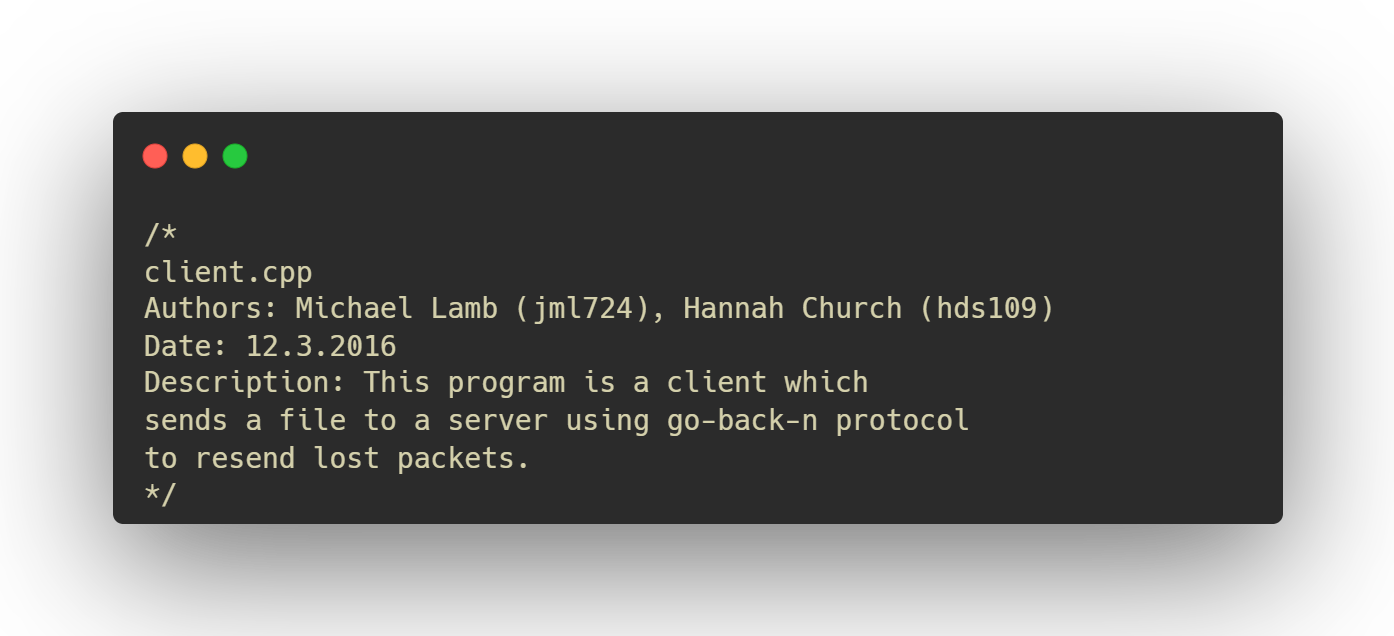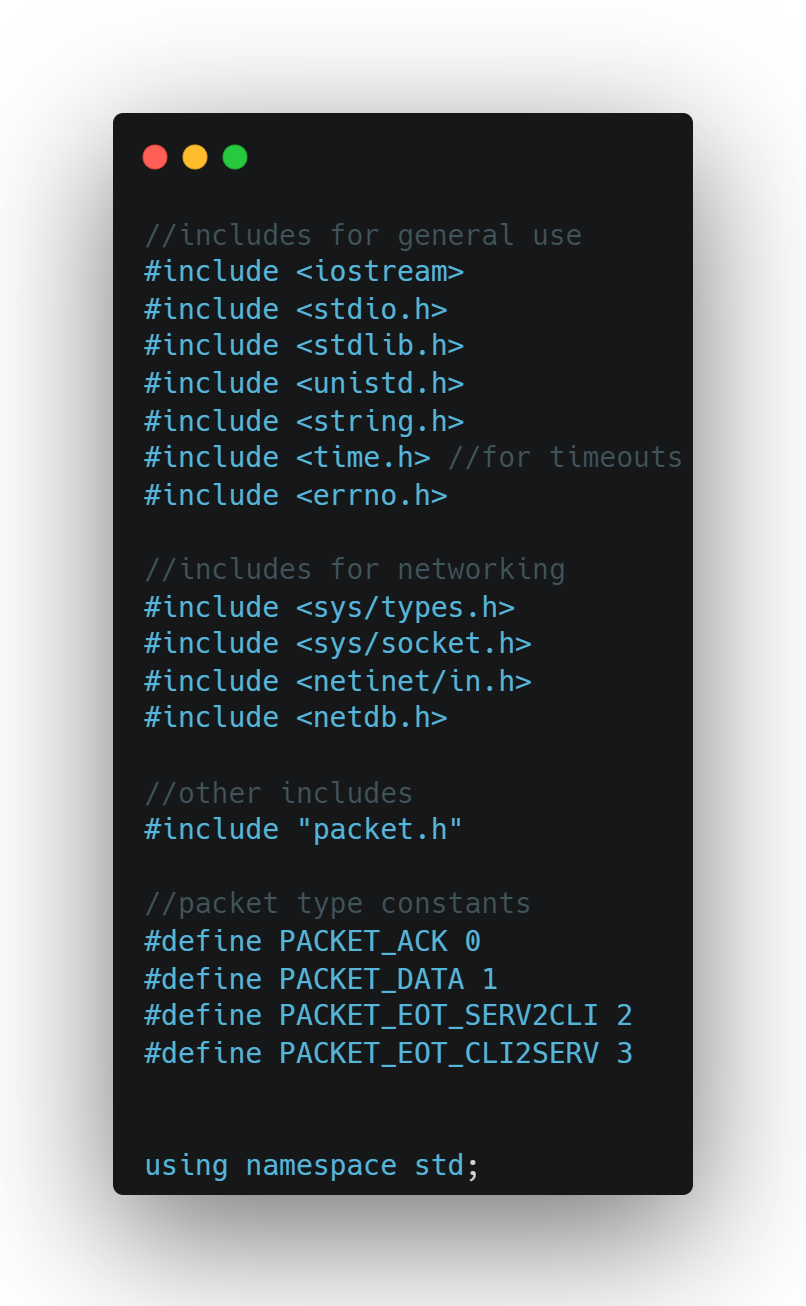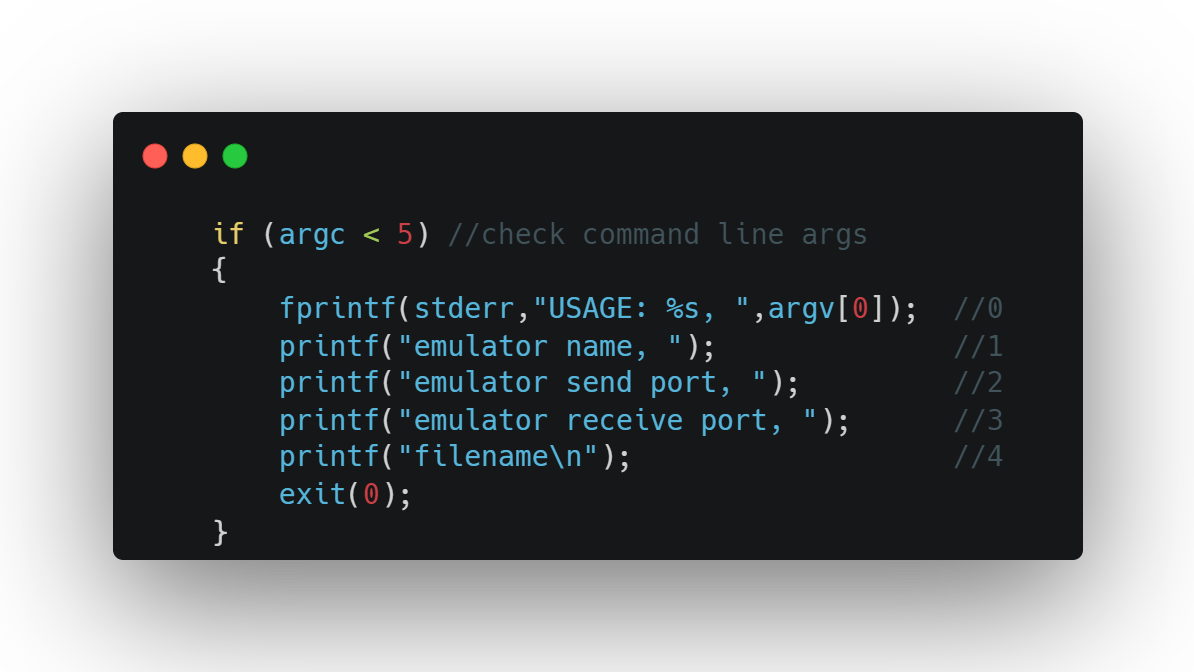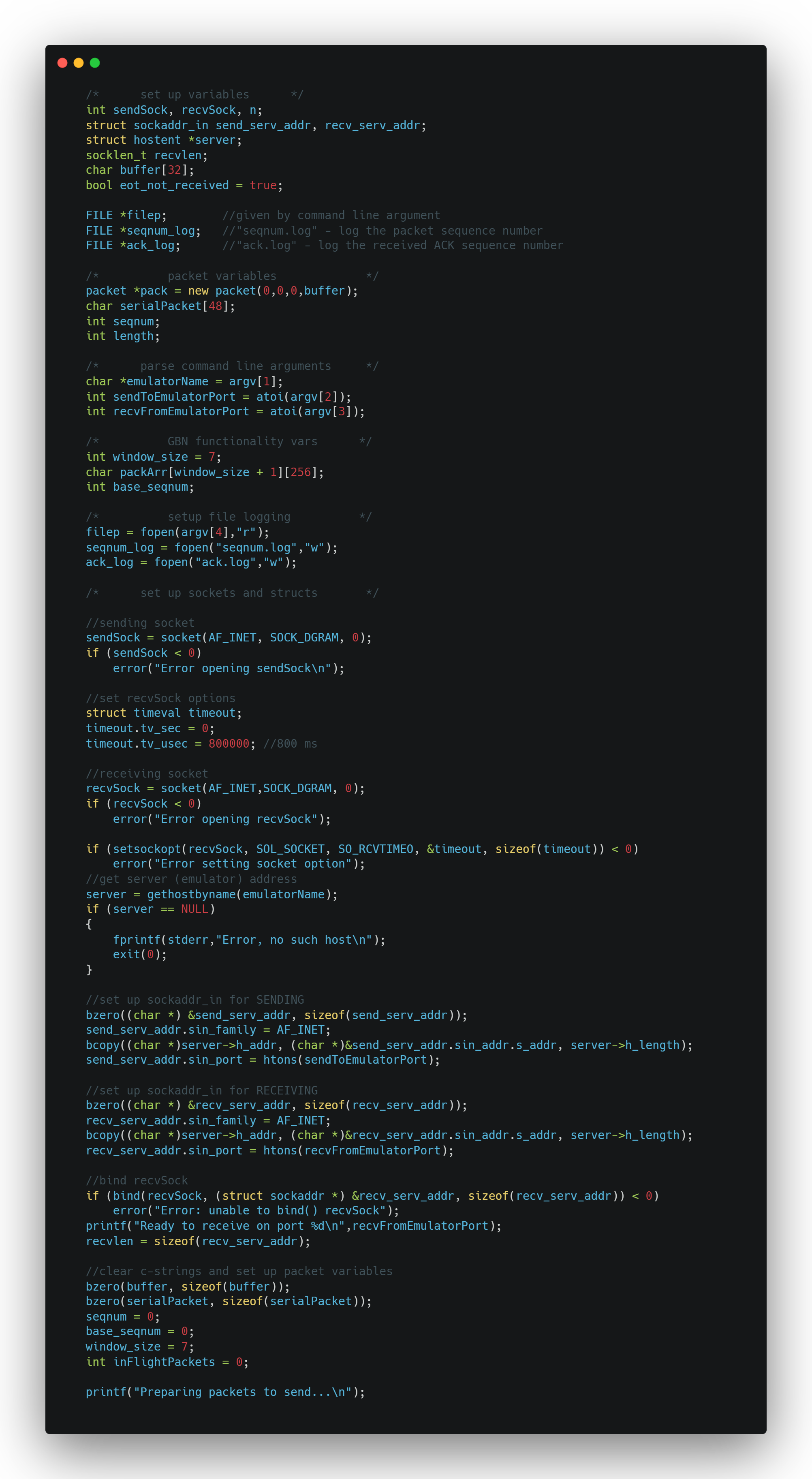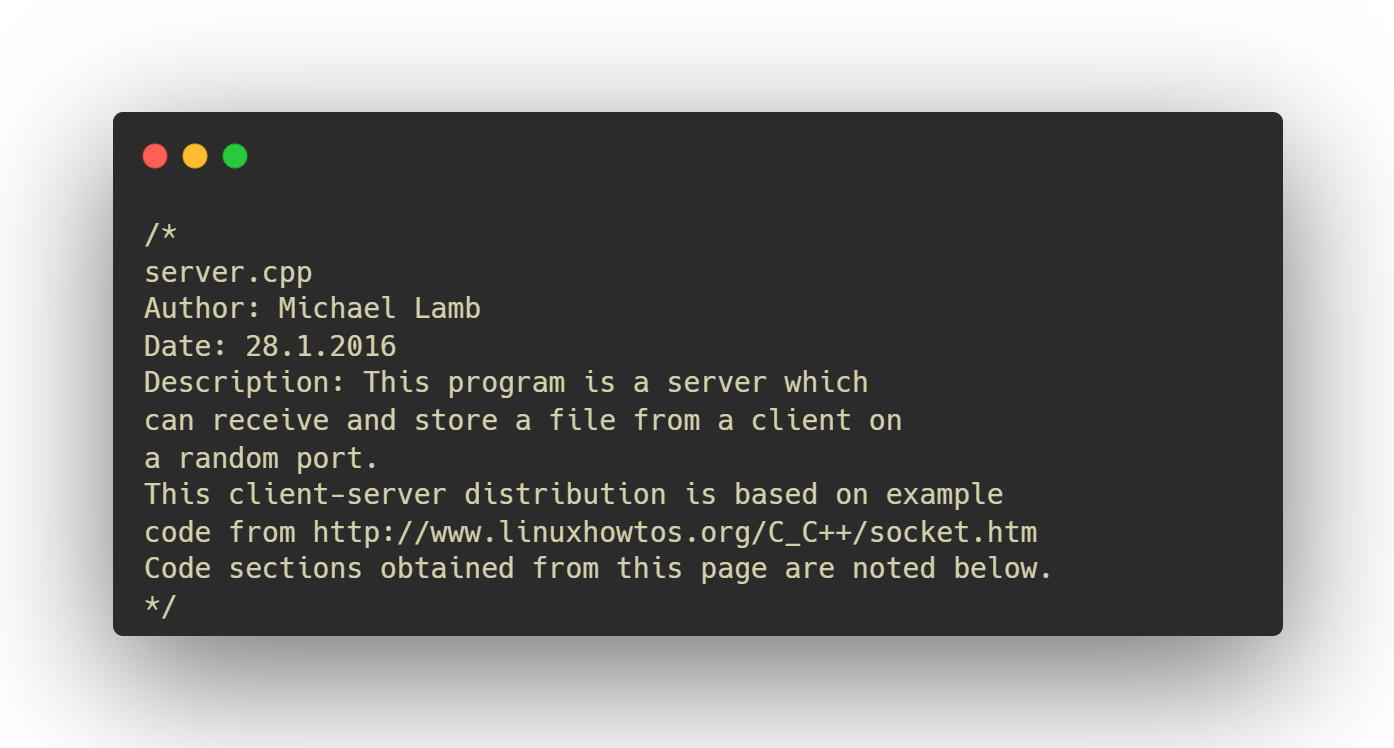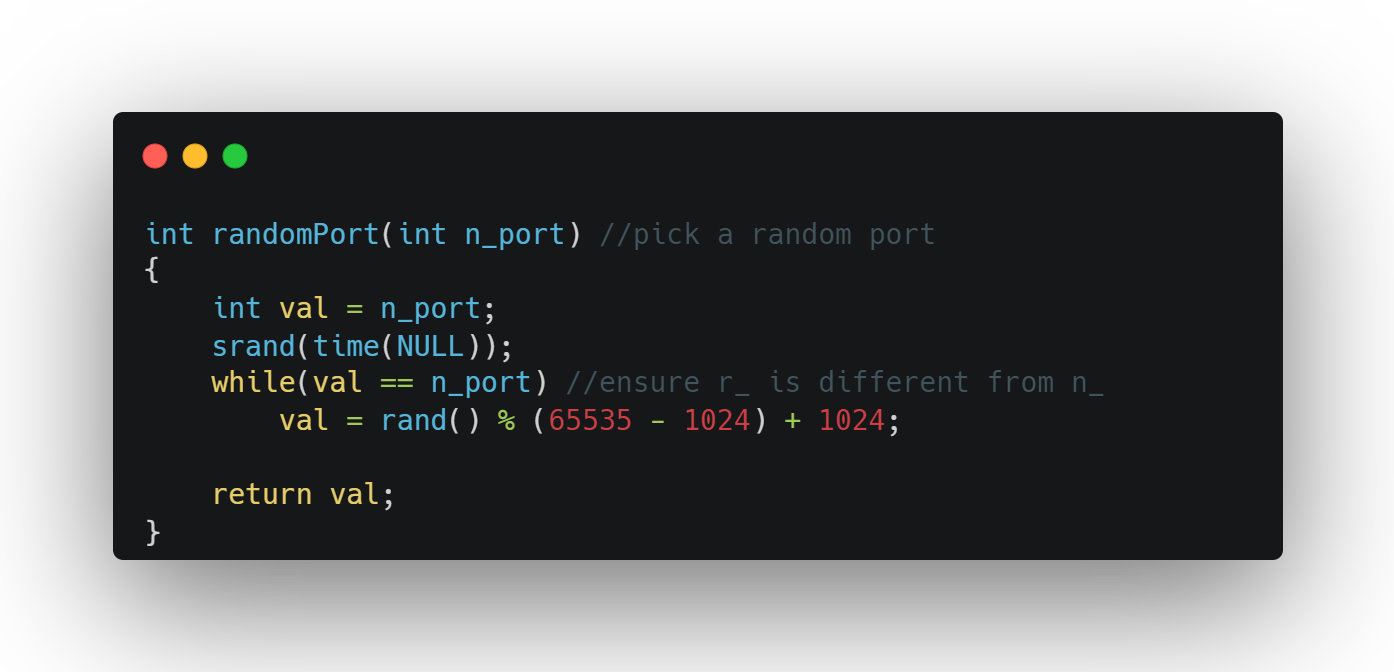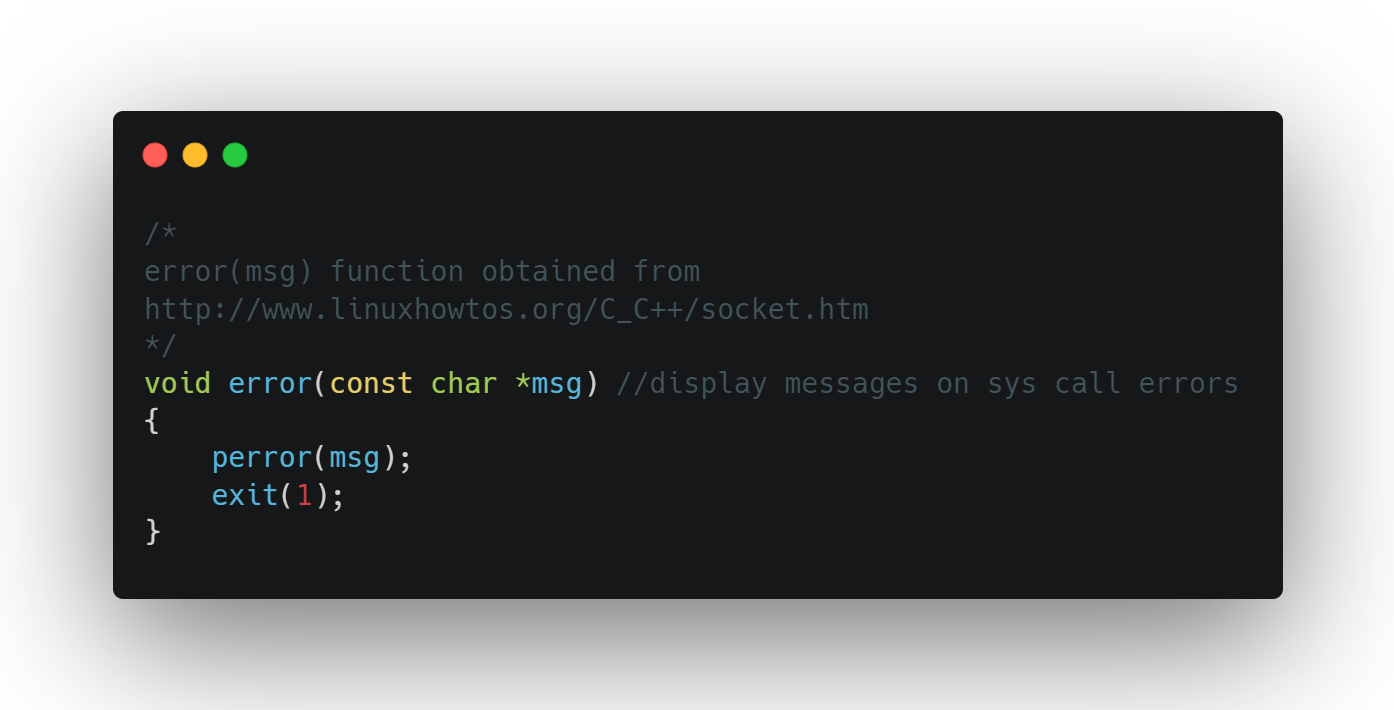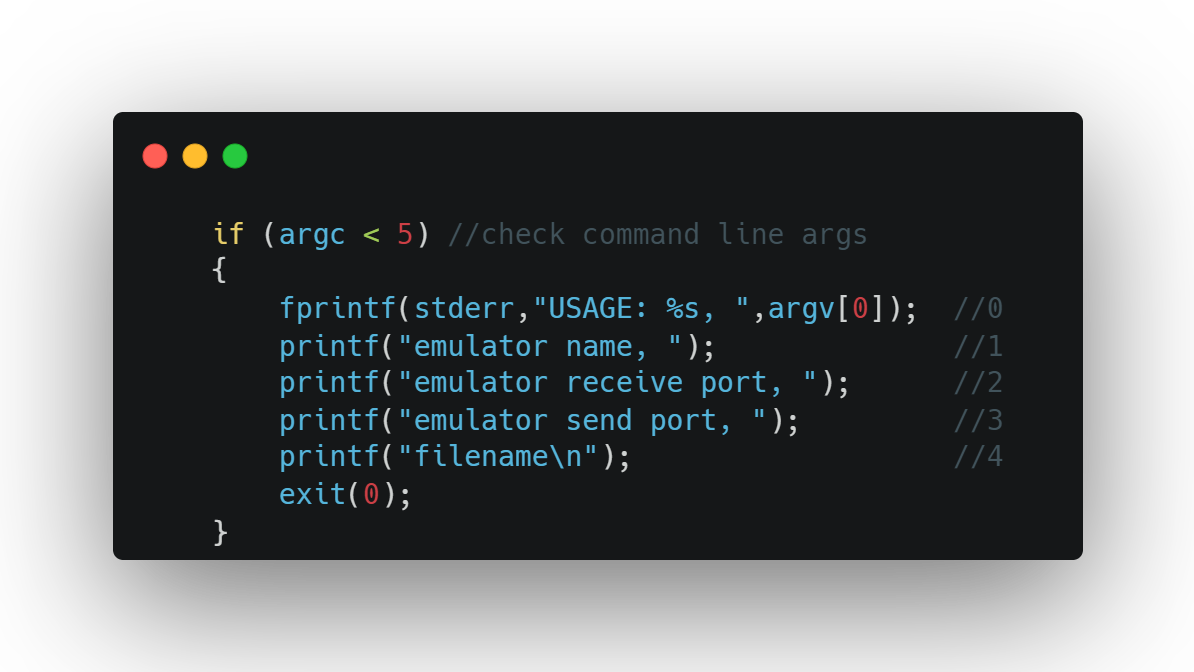Go-Back-N Protocol
Published on 16 February 2022.
An algorithm solving for a lossy network
In what was probably my favorite college course I implemented a client/server system which would transmit messages across a lossy network. A client connects to the server to send a file. By tracking packet acknowledgements from the server, the client should repeat lost packets by using a go-back- n protocol where n is limited to 7 packets.
This was one of three programming assignments for a class called Data Communication Networks. I took this in the spring semester of 2016. My professor was Dr. Maxwell Young. In this post, I’ll give an overview of my archived repo available on GitHub. This assignment was foundational to my understanding of distributed systems. Using an emulator program written by Dr. Young to simulate a lossy network, I learned the importance of writing resilient code by enforcing an algorithmic protocol we referred to as go-back- n which is used by the client to ensure that all data was received by the server. The server would keep track of what packets it receives from a client and will only accept the expected sequence number. Below, you’ll find my comments on the code I submitted as part of this assignment. We were permitted a partner when writing the algorithm itself, but the networking code we were expected to complete on our own.
Usually, a server is a program that runs as a service on an operating system for high availability to accept any number of clients. Because this particular client/server implementation was for a class assignment I opted to close my server once the program requirements are satisfied. Obviously this wasn’t built for any sort of production use and is provided only as educational material.
makefile
I was constantly rebuilding the entire distributed system and running it locally on my machine. My makefile here creates the necessary executable files from source in order: first create the packet.o executable, then use packet.o to build the client and server executables. Running make main accomplishes all of this. Because the client and server are tiny the build process executed in less than a second which made the feedback loop very quick when I was writing this.
Running make zip was a requirement from the assignment and so I included it here to make a zip file called pa2.zip including the specified source files.
make clean deletes all executables in the directory
client.cpp
Shout out to Hannah Thiessen (referenced here by her former name, Hannah Church) who helped write the client implementation of go-back- n. We spent a long, long Saturday in Butler Hall working on just that portion alone. JJ Kemp observed our work, as was his way.
Libraries included in the client provide basic i/o and networking.
packet.h provides a class to represent individual packets sent between the client and server. Constants are defined to represent the type of packet received; PACKET_ACK describes a packet from the server acknowledging receipt; PACKET_DATA describes a packet from the client with data; PACKET_EOT_SERV2CLI is a one-time packet type which tells the client to close; PACKET_EOT_CLI2SERV is a one-time packet type which tells the server to close because of the end of transmission.
The client uses libraries in the std namespace.
Command line arguments to the client configure how the client will connect to the emulator program, provided as part of the assignment as an executable with its own CLI. The server connects to the opposite send/receive ports to enable two-way messaging with the client. The filename argument specifies what file to parse into packets for messaging.
Here’s what’s going on in this snippet: everything here lives in the main function. This sets up networking i/o and file i/o, as well as some tracking variables related to packet messaging and logging including a timeout for ACK responses from the server.
If I were to refactor this code, I would separate the network and file i/o from the main logic for sending packets to the server. The separations would either move the relevant parts to separate functions or into an individual class. Though there is some overlap between the client and server in regards to file and network i/o, I can imagine creating indivual classes for each concern would still result in client-specific and server-specific i/o classes.
server.cpp
The best resource I found for the basics of getting a server up and running was from linuxhowtos.org. I referenced it here because I’m a good boy who doesn’t want to plagiarize. Always give credit.
Libraries included in the server provide basic i/o and networking.
packet.h provides a class to represent individual packets sent between the client and server. Constants are defined to represent the type of packet received; PACKET_ACK describes a packet from the server acknowledging receipt; PACKET_DATA describes a packet from the client with data; PACKET_EOT_SERV2CLI is a one-time packet type which tells the client to close; PACKET_EOT_CLI2SERV is a one-time packet type which tells the server to close because of the end of transmission.
The server uses libraries in the std namespace.
randomPort is a function which accepts an int parameter and returns an int value. n_port is the port number with which a random port will communicate, so the value is required to be different from n_port. There is a problem with the assignment to val in the while loop: a random value is modded by 64511 which is computed first and 1024 is added to the computed remainder. When I originally wrote this I was attempting to enforce some guarantee that the random port number wouldn’t use one of the commonly reserved ports (below 1024) and the thought process I had is an attempt at hashing out the logic: a random value will be some large number seeded on the system clock and so I should attempt to generate a value between the possible port numbers while accounting for the fact that ports lower than 1024 are reserved, so I should add that amount back.
The problem is that there is a chance this algorithm accidentally creates a port number outside of the acceptable range 65535. A correct implementation would have separated the conditions: once a value is assigned modded by 65535, check if the value is less than 1024. If yes, then re-roll.
Here’s how I’d rewrite it now:
int randomPort(int n_port) //pick a random port
{
int val = n_port;
srand(time(NULL));
while(val == n_port && val < 1024) //ensure r_ is different from n_
//ensure r_ is not a reserved port below 1024
val = rand() % 65535;
return val;
}
If the return value would result in a reserved port number, the while loop would simply generate a new value until it finds one which satisfies the exit condition of the loop.
The error method provides a convenient way to fail fast by printing out a custom error message and exiting. I’ve learned a lot about error handling since this program but this is still one of the most elegant pieces of code I’ve ever seen.
Command line arguments to the server configure how the server will connect to the emulator program, provided as part of the assignment as an executable with its own CLI. The client connects to the opposite send/receive ports to enable two-way messaging with the server. The filename argument specifies which file to use for logging messages.

About michaellamb.dev
Michael Lamb is a software engineer working at C Spire. If you have a blog-specific inquiry please create a new issue on GitHub. Feel free to fork this blog and build your own!Get to know who I am in my first post Hello, World!

